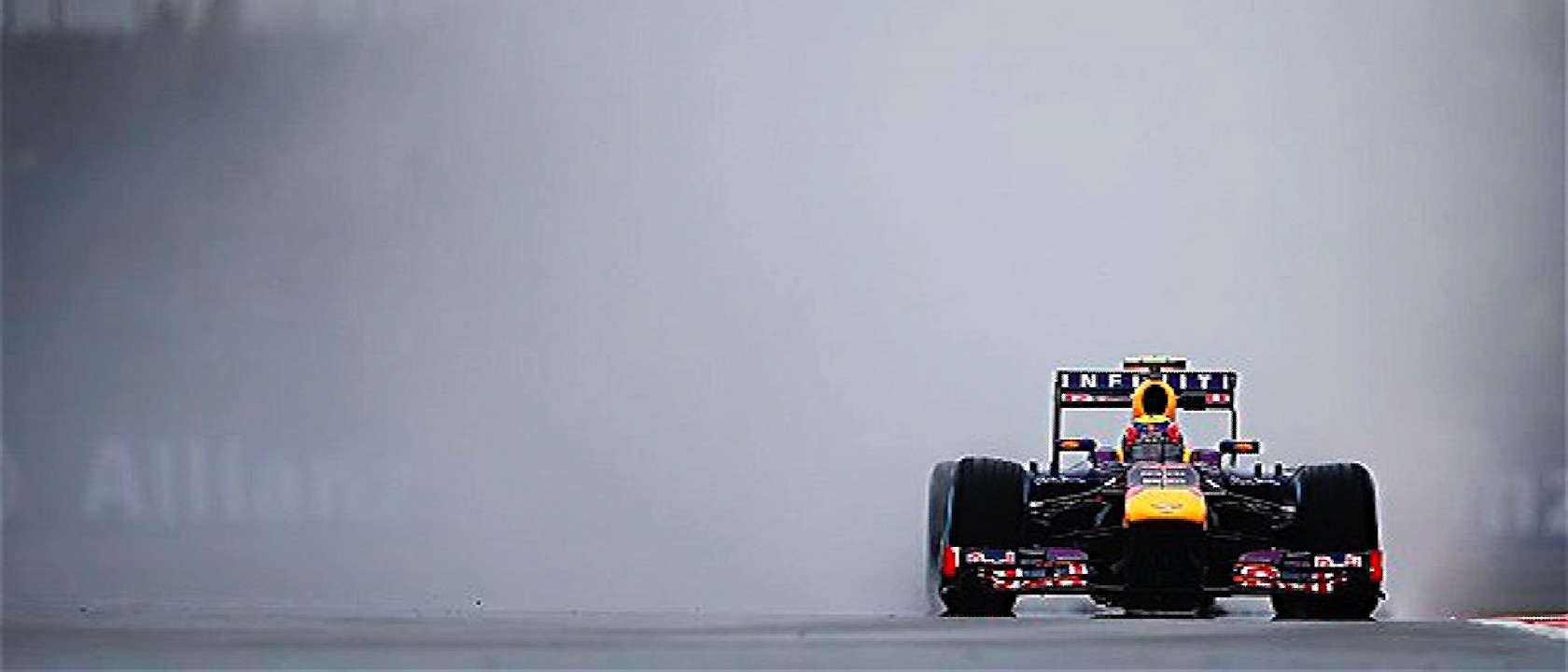Last weekend’s British GP was a tire fiasco. As a consequence of the unprecedented failure of Pirelli’s 2013 F1 tires in a series of massive explosions, the Italian company disclaimed any responsibility for the events … and the Grand Prix Drivers Association (GDPA) presented an altogether predictable threat to boycott the German GP if corrective action is not taken.
Pirelli said there were four factors behind the failures: mounting rear tyres the wrong way round, with tyres intended for the right rear of the car put on the left; adoption by the teams of too-low pressures; extreme camber settings; and aggressive driving over kerbs at Silverstone. And although Pirelli is adamant that the Kevlar-belted rear tyres it has brought to the Nürburgring will not suffer a repeat of the sudden failures suffered by the steel-belted ones used at Silverstone, the drivers are clearly not fully satisfied.
Formula One drivers threaten to boycott German Grand Prix over tyres | The Guardian.
It’s just absurd that Pirelli is trying to shift the blame to the Formula One drivers and teams. All of the set-up and driving techniques they point to have been hallmarks of F1 for decades, without anything even close to what happened at Silverstone. These were not tires wearing to the threads, punctures or even delaminations. They were explosions, pure and simple.
Nor is the boycott threat to be taken lightly. A look back in Formula One history reveals that safety concerns are often, and ironically, only addressed after a boycott initiated by the teams and drivers themselves. For instance:
- 1969 Belgian Grand Prix at Spa-Francorchamps: In perhaps the most famous boycott of them all, Jackie Stewart — who suffered serious injuries in a 1996 Spa crash due to defective safety conditions, like no runoff areas or Armco barriers, and almost non-existent medical facilities — coordinated a boycott of the famously intimidating circuit. The race was cancelled, barriers were installed for 1970, and the original 15km circuit was reduced to just over 7km after disappearing from the F1 calendar from 1971 to 1982.
- 1982 San Marino Grand Prix at Imola: The 1982 San Marino GP saw a boycott for a much different reason altogether. It was a political war between two associations: the Formula One Constructors Association and FISA (forerunner to FIA). After Keke Rosberg and Nelson Piquet’s disqualification from the Brazilian GP for the use of water tanks as ballast to circumvent minimal car weight requirements during scrutineering, the Brabham, McLaren, Williams and Lotus teams — led by current commercial supremo Bernie Ecclestone — all refused to race in Imola, yielding a 14-car field, a pleasing “home” victory for Ferrari, and the infamous feud between Didier Pironi and Gilles Villenuve that led to the latter’s death in qualifying at the next race in Holland.
- 1975 Spanish Grand Prix at Montjuic Park: The beautiful Montjuic Park circuit in Barcelona was the scene of the most poignant F1 boycott. Right from the start, the GDPA drivers were furious that the barriers had not been bolted together properly and went on strike. Most of the sport’s major players refused to take part in practice. Track staff worked overnight to fix the barriers, and to make sure everything would be fixed in time for qualifying on Saturday some of the teams sent mechanics out to help. The drivers, though, still weren’t convinced, but the race organizers threatened legal action if no race was run. This, and rumors that the Guardia Civil would seize the cars which were in the Estadi Olímpic Lluís stadium that served as a paddock, forced the drivers to call off the strike. Emerson Fittipaldi, however, was still furious. He did the minimum three laps, but at a very slow pace, then pulled into the pits. The next morning, Fittipaldi announced he wouldn’t run, and went back home. Tragically, during the red-flagged race Rolf Stommelen’s Hill-Lola stuck one of the poorly repaired barriers on lap six and flew into the crowd, killing four people (a fireman, a photographer and two spectators).
- 2005 United States Grand Prix at Indianapolis: A Ralf Schumacher crash at Turn 13 — a high-speed banked turn on the famed Brickyard oval — prompted concern among the Michelin engineers after the French tire suppliers determined that the banking caused excessive tire wear that put in danger all drivers whose cars used Michelin tires that weekend. But the FIA (led by Max Mosley at the time), did not agree to a suggested chicane and the seven Michelin-clad teams boycotted, returning to the pits after the installation lap at the start of the Grand Prix, to avoid putting their drivers at danger. So the 2005 USGP was run with a farcical six-car grid that infuriated both fans and drivers alike.
- 1976 Japanese Grand Prix at Fuji: While the 1976 Japanese GP is most well known for Niki Lauda’s withdrawal in atrociously wet conditions, handing the title (after some struggle) to McLaren’s James Hunt, Larry Perkins, defending World Champion Emerson Fittipaldi and Carlos Pace also withdrew. Perkins retired immediately, with Fittipaldi retiring after two laps and Pace retiring after nine. The rest of the field, however, raced on.
- 1976 Austrian Grand Prix at the Österreichring: In 1976 the Austrian GP was run without Ferrari, whose Austrian driver Lauda remained in the hospital after his fiery crash at the Nürburgring, which was incensed at Hunt having his Spanish GP win reinstated after initial disqualification.
As Christian Horner observed, Felipe Massa could easily have been killed in Britain. For a generation of drivers who have grown up with the modern safety-oriented culture of F1, that simple reality means their threat to boycott the “new” Nürburgring — itself a creature of safety after the original Nordschleife was retired as a GP venue in 1980 — is completely understandable, and perhaps even required.


